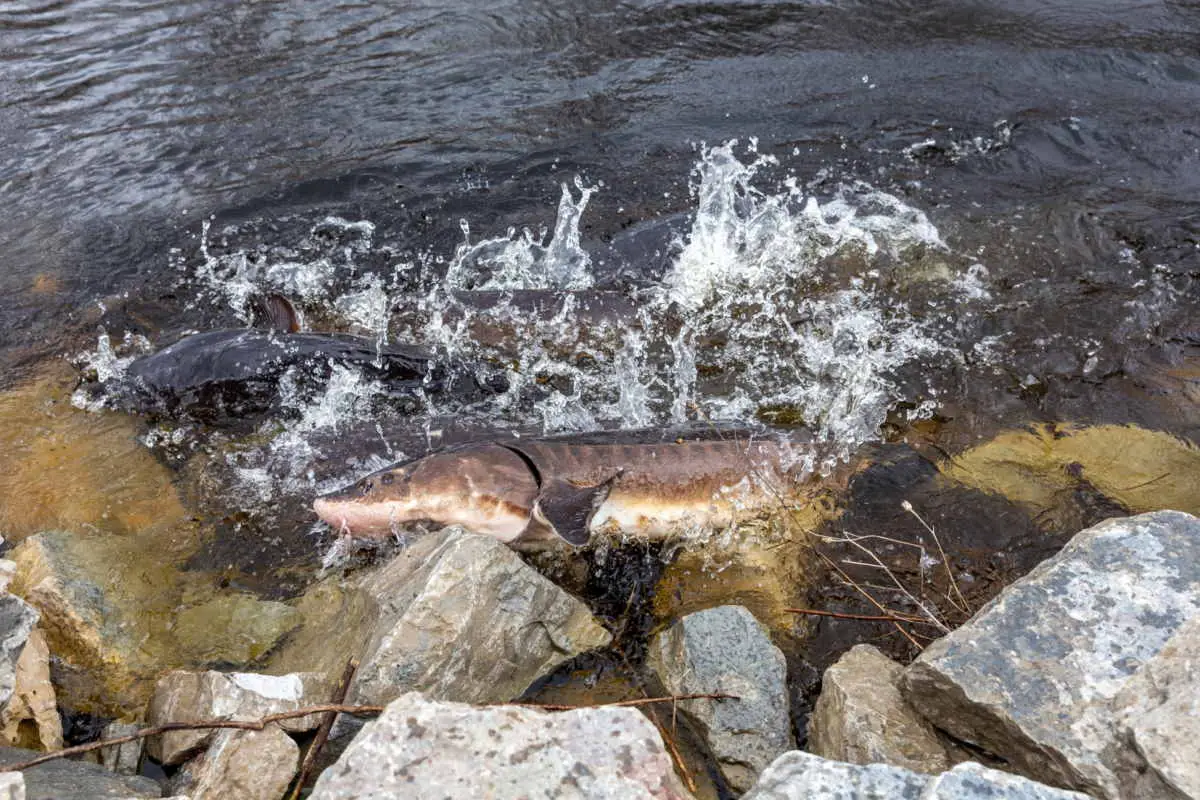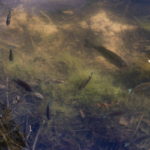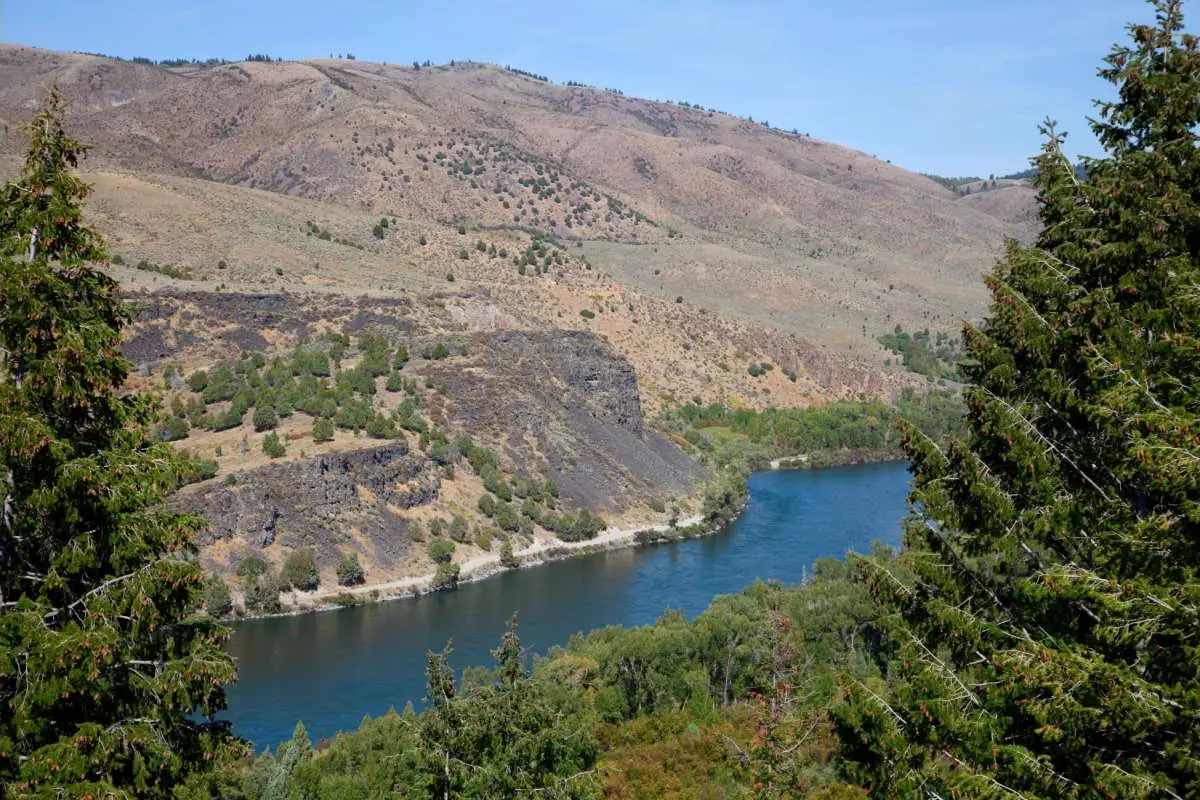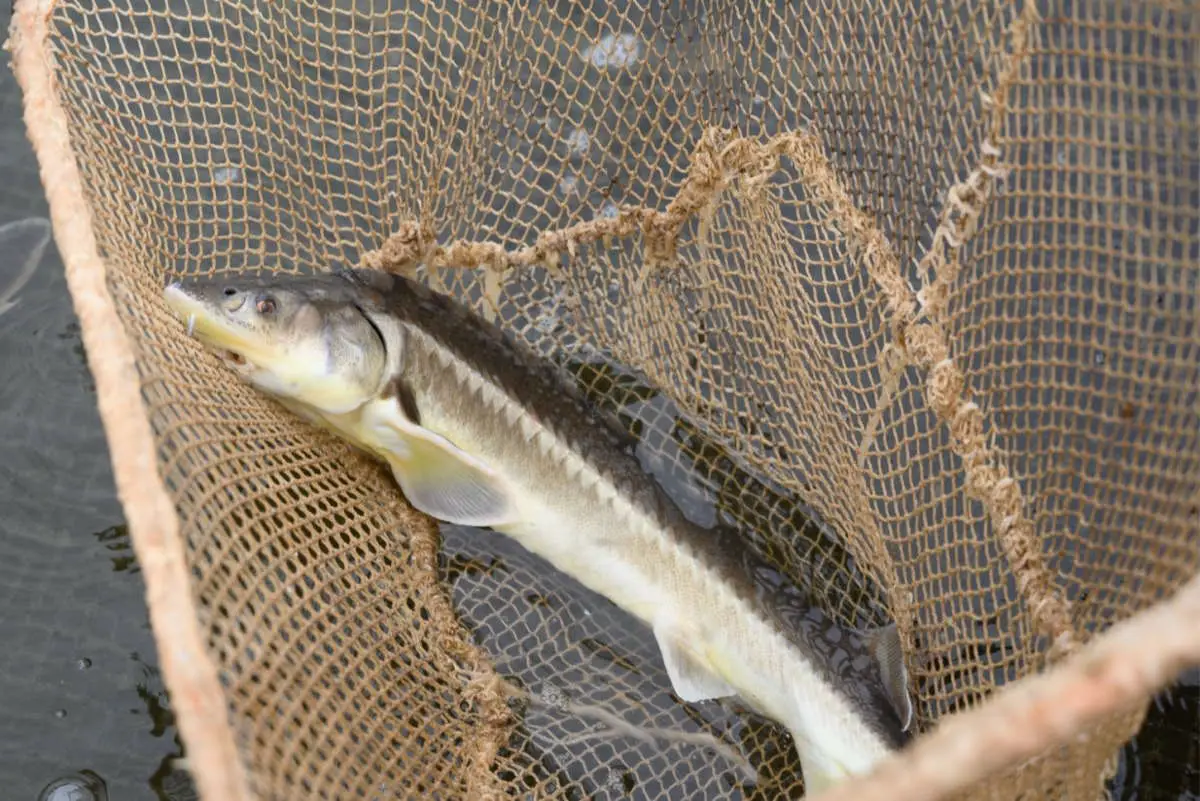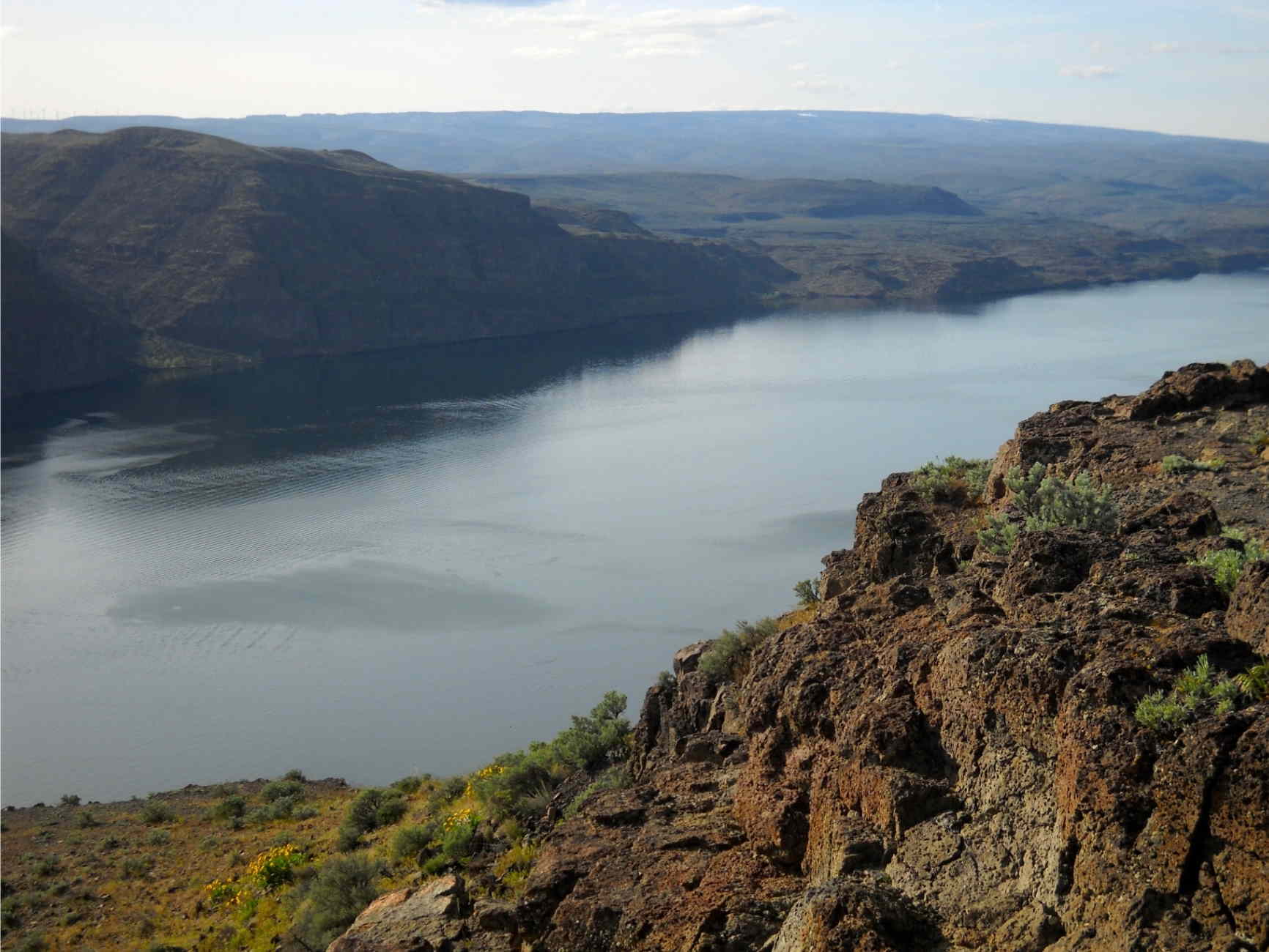For many, sturgeon spawning is a special occasion. At prime riverine lakes across the state, families continue to take trips each spring so they can witness this strange phenomenon. The sturgeon are old, massive, and slightly unsettling to look at, but that all adds to their appeal. Popularly termed dinosaur fish, the species swim upstream in late April and gather in their spawning grounds. What happens next is a sight to behold.
What Factors Influence Sturgeon Spawning?
Research shows that the mating cycles of sturgeon rely on a few key factors and that variations in these factors greatly influence the spawning rates of the fish. There are two aspects to consider
- Water termperature
There are several stages in the spawning process. From 6.6 to 16C sturgeon show clear behavioral symptoms characterized by a porpoising motion where they alternately swim to the surface of the water and then submerge themselves in it.
From 8.8 to 16C male fish enter the spawning grounds and start circling while looking for ovulating females. At this stage, the female sturgeon will begin to collect in the zone one at a time.
From 11.5 to 16C the sturgeon will actively mate with activity increasing as the temperature rises. The duration of this stage depends on the behavior patterns set by the ovulating females and the intensity with which they use a particular site. Typically the same site is used for around 2 to 4 days.
- Flow
The flow of the water dictates the temperature requirements for spawning to take place. On occasions where the flow of water is fast and temperature rise is gradual, the spawning process starts at around 11.5C.
However, when the water flow is slow and the temperature rise is sudden, sturgeon do not begin to actively mate until the water crosses the 14C mark. The variation in season and terrain will influence how the temperature and flow change. That in turn governs the reaction of the sturgeon.
How Long Does Sturgeon Spawning Last?
The average sturgeon mating act lasts between 2 to 4 seconds, in which time females release anywhere between 900 to 1400 eggs each bout. Several males, around two to eight will gather to inseminate these eggs. Multiple males will fertilize the eggs of a singular female, thus increasing the odds of spawning.
At this stage, they will swim alongside the female, often against the current. Once the eggs are in the water, the males will give off milt. It is easy to spot when this is happening since the water turns a milky white. The sturgeon will then splash around and the males will also make a vibrating sound to inform and attract other males. All of this commotion causes the milt in the water to fertilize the eggs. Overall, the entire process may last up to an hour or more.
As long as temperatures remain near-optimal, ovulating females will continue to have consecutive bouts, at 1.5-minute intervals, for up to 12 hours. The spawning sites will generally remain active for 2 to 4 days. And while ideal temperatures are between 11.5 and 16C, the sturgeon will not be detracted from the spawning process even if the temperatures fall outside the optimal range.
Once the spawning is complete, the sturgeon will vacate the area, returning to the primary river channel.
How Does the Spawning Process Occur?
As a rule, male sturgeon tend to enter the spawning sites earlier. There they cruise in groups ranging from eight to twelve and wait for ovulating females to enter the site. The spawning begins as soon as the female arrives.
Within the species, you may find it interesting to note that female sturgeon tend to mature between 20 to 25, whereas their male counterparts spawn between 12 to 15 years. Once they reach maturity, males will continue to spawn either yearly or in alternating years, while females will spawn once every 3 to 5 years.
Because of how the ratios skew, statistics for the Winnebago sturgeon show a far greater number of males than females, at a ratio of 1 to 5. Spawning takes place primarily in the flowing waters of streams and small tributaries but can take place in other locations where there is fast-moving water.
When Do Sturgeon Begin Spawning?
The spawning season is typically in spring, although the exact dates may differ. If you’re looking to mark a date on your calendar then the third week of April is generally a good bet. A study of over two decades showed consistent behavioral patterns among the sturgeon. In other words, the only times there was a break or interruption in the spawning process was in years with extremely cold winters, where water temperatures remained too low.
On occasions where the temperatures dropped after the female sturgeon had begun spawning no interruption was noted; the fish went on despite the less than ideal circumstances. Although, new females would not enter the site until the temperatures rose back up.
Does Human Presence Affect Sturgeon During Spawning?
Now you might be wondering, will your presence negatively impact the sturgeon? Well, you’ll be pleased to know that at the height of their mating process, the sturgeon are oblivious to outside interference. And during early May when the spawning is at its peak, the sturgeon are not deterred by human presence near their spawning site.
In fact, you could easily touch or grab a fish if you chose to. Of course, there would be immediate consequences to such an action. The sturgeon will likely move away from that bank, swimming up to 20m downstream to get away from the human interruption, especially if that action disturbed the group’s female.
So while it is okay to take a trip and look at these magnificent creatures in their natural habitat, it is not acceptable to physically interfere with the fish as you could severely upset the mating cycle.
Is Spawning Dangerous for Sturgeon?
As we have already established the rules are very different for male and female sturgeon. The males of the species may spend days waiting patiently in the spawning site. At this point, you may notice them swimming in circles or staying completely immobile in one place. Alone, they will remain relatively calm.
However, the situation takes a drastic turn where a female enters the scene. At first, one male sturgeon will approach the ovulating female. Soon many others will join him. The spots on either side of the female sturgeon become prime real estate in the second preceding the spawning. That is because the male sturgeon beat on the female’s abdomen with their tail and caudal peduncle during the 2 to 4 second rounds.
Generally, two to eight males will come together to cater to the needs of a single female, with the average being around five. In their efforts to gain those primary, coveted spots in her immediate vicinity males will often become violent. In fact, experts have noted skull fractures among the results of this aggression, along with split rostrums.
All in all, it makes for an extremely exciting viewing experience. Now you know everything there is to know about sturgeon spawning behavior. So when you see the alternating periods of calm and havoc or the clear blue waters turning to milky white you will know exactly what’s happening.
